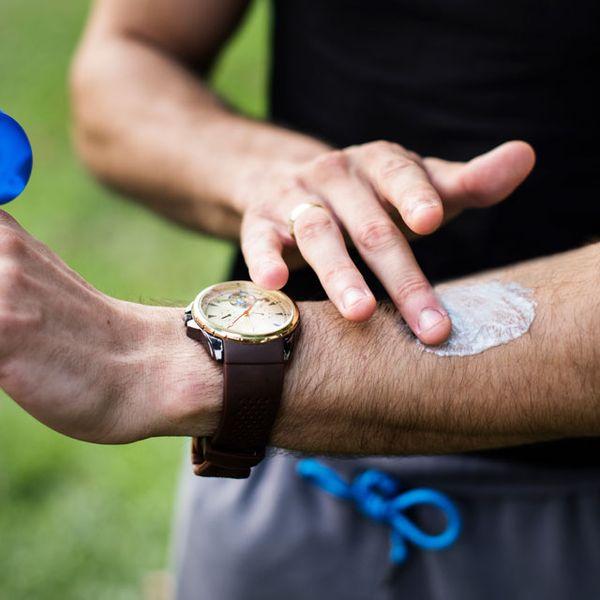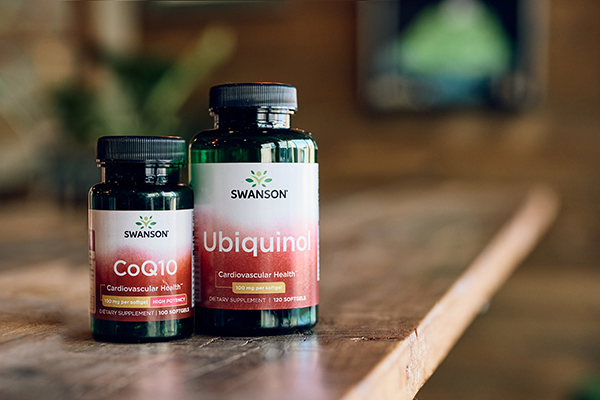It is that time of year again. The time when flip flops and shorts are pulled out, you take walks and bike rides in the park regularly, you sip a margarita on the patio, have cookouts with friends and family, and spend weekends at the beach or lake. Oh, and the time you often come home looking like a lobster.
Summer is glorious in so many ways, but painful sunburns are not so fun – not to mention harmful. So to help you stay safe in the summer sun this season, here’s everything you need to know about taking care of yourself.
What Is a Sunburn?
Basically, a sunburn is when there is visible damage to the skin as a result of too much exposure to the sun’s UV rays.
It doesn’t appear immediately though. A sunburn appears hours after exposure and is most painful 6 to 48 hours afterward. Skin begins to peel three to 10 days after the burn. If there is severe pain or blistering, you should see a physician.
Why It Matters
We all know by now that there are major dangers to too much sun exposure. The sun’s UV rays can damage skin cells and contribute to wrinkles, accelerated aging and skin damage, and some can even disrupt your body’s hormones.
What Does SPF Stand For?
Enter sunscreen to protect against those rays. Today, sunscreens bear a number called SPF, which stands for “sun protection factor.” This number refers to the level of protection against the sun’s UV rays, particularly UVB, which are the rays that cause skin to burn (notice that doesn’t include harmful UVA rays).
Generally, the higher the SPF number, the better. But don’t buy in to sky-high SPFs, which can give a false sense of security. You’d think that a SPF of 100 would give twice the protection of SPF 50, but that is not the case. The additional protection above 50 is actually marginal. It’s because of this that Environmental Working Group (EWG) recommends avoiding products with a SPF higher than 50. Regardless the number on your bottle, it’s still very important you reapply any sunscreen often and follow all the other sun safety tips.

Current Sunscreen Regulations
The FDA announced new sunscreen regulations in 2011, including banning “waterproof” claims on labels, the sale of towelettes and powders, and allowing the term “broad spectrum protection” on products that meet their criteria, which implies both UVA and UVB protection.
Critics are saying that these changes did little to actually improve sunscreen products and that “broad protection” criteria are too loose. In Europe, much stricter EU standards have been set, and the EWG estimates that half of the U.S. sunscreens wouldn’t even make it on shelves there.
The EWG assessed hundreds of sunscreen items on the market in 2014, and many fell short. Only 149 products met their criteria. On the good list were items from brands you can find in the Swanson store, including All Terrain, Alba Botanica, Badger, California Baby, Kiss My Face and Nature’s Gate.
The EWG also assessed moisturizers with SPF, and 62 products made the good list. Some of those items include Andalou Naturals Brightening BB All-In-One Beauty Balm Sheer Tint, Mineral Fusion Facial Moisturizer, and MyChelle Dermaceuticals Sun Shield Unscented.
Dangers of Sunscreen
Now, the downside to blocking the sun’s rays is that you’re not only blocking the bad, but you’re also blocking the good. Vitamin D, commonly known as the “sunshine vitamin” is manufactured in our bodies in response to sun exposure. We need vitamin D for healthy bones, optimal calcium absorption and healthy immune response. By slathering on the sunscreen, your body cannot make enough vitamin D on its own.

In fact, even before sunscreen, many experts are saying most Americans don’t get enough of this vitamin in their daily lives. Even then, it’s hard to estimate how much time you’d need in the sun to get your vitamin D allotment from sun alone. Factors such as your skin type, how much skin is exposed, time of day and time of year all play a role. An approximate estimation is just 10-15 minutes a day for lighter-skinned people between 11 a.m. and 3 p.m.
How can you get this essential vitamin but still be safe? Hint hint: we sell it. You got it – supplements! Most vitamin D supplements deliver 400-10,000 IU of vitamin D3 (cholecalciferol), which is the form your body produces from natural sunlight. You can also monitor your diet to deliver vitamin D through food, though that can be difficult to reach the right amount as well.
Another downside to many sunscreens is the inclusion of chemicals and bad-for-you ingredients in many store-bought products. See the words “paraben,” “oxybenzone” or “retinyl palmitate” on your label? That’s bad.
The good news is that there are some sunscreen products on the market that are natural and don’t contain harmful ingredients—a handful of those are mentioned in the above section on regulations.
How To Choose a Sunscreen (What to Look For)

Tips for Preventing and Treating Sunburns
- Apply moisturizers and lip balms with SPF daily, even if just going outside for a brief period of time
- Wear protective clothing, included brimmed hats and sunglasses
- Choose shaded areas instead of direct sunlight
- Frequently apply sunscreen with a high SPF
- Limit your exposure to short periods of time
- Avoid the sun when the rays are strongest (approximately 10 a.m. to 2 p.m.)
- Eat tomatoes to get the antioxidant lycopene, as well as dark green, red and yellow fruits and veggies to promote skin health
- Take vitamin C, vitamin E and beta-carotene supplements for further antioxidant power
- Apply aloe to soothe burns (and store it in the fridge for extra cooling!)

Natural Alternatives at Home
It’s also really easy to make your own sun care remedies right at home using safe, natural ingredients. The easiest way to make sunscreen is to simply mix plain zinc oxide ointment with your favorite lotion, and voila! To treat a sunburn, try a cool compress or cool oatmeal bath. Even a half cup of baking soda in a tub of water provides relief. Here are a few additional DIY recipes you can try at home to avoid toxic chemicals:
Homemade Sunblock Lotion, approx SPF 20, via homemadetoast.com
You’ll need:
- 2 ounces shea butter
- 2 ounces coconut oil
- 1 ounce zinc oxide
- Approx 8 drops of tea tree (or your favorite essential) oil
Directions:
- Melt the shea butter and coconut oil together. You can use a double boiler or a Pyrex measuring cup set in a saucepan.
- Remove from heat; stir in zinc oxide (careful to not inhale the particles in this step!). Pour into desired container.
- Cool completely before use. Store at room temperature and avoid direct sun exposure.

Homemade Overnight Sunburn Remedy (use in place of aloe) via livinginanotherlanguage.com
You’ll need:
- 1/4 cup apple cider vinegar (ACV)
- 1 cup cold water
- 100% pure coconut oil
- A spray bottle (optional)
Directions:
- Pour the ACV into the spray bottle, adding a cup of cold water on top of that. Shake well and spray liberally over burnt skin. Have a towel on hand to blot up any excess that drips. Let dry.
- (Or if you don’t have a spray bottle, simply dab the mixture gently with a cloth.)
- Gently rub your skin with the coconut oil. Put on a loose shirt so you don’t get your sheets oily and go to bed. The burn should decrease significantly overnight.

Tanning without the Sun
If you’re looking to get a golden glow safely sans sun, there are plenty of alternatives that don’t involve going outside at all.
- Apply self tanning lotions (I personally use the Alba Botanica Sunless Tanner and love the subtle color and great scent it gives my skin)
- Use bronzing makeup powders to sweep some color on easily
For any tanning lotion, to prevent looking orange and streaky, make sure to exfoliate well prior to use, and read reviews of the product so you can be confident in the reputation of what you’re using. And especially if you have sensitive skin, always do a patch test first so you don’t have a bad reaction all over your body.
These simple tips can ensure that you and your family can have fun outdoors this summer while staying safe.
Sources:
http://www.ewg.org/sunsafety/tips-practice-smart-sun.php
http://www.nhs.uk/Livewell/Summerhealth/Pages/vitamin-D-sunlight.aspx
http://www.homemadetoast.com/2013/07/the-truth-about-homemade-sunscreen.html
“Take Care of Yourself” by Donald M. Vickery, M.D. and James F. Fries, M.D.




